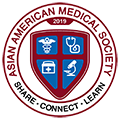Orthopaedic surgery
Orthopaedic surgery focuses on injuries and diseases of your body's musculoskeletal system, including the prevention, diagnosis, and treatment of disorders of the bones, joints, ligaments, tendons and muscles. Some orthopaedists are generalists, while others specialise in certain areas of the body, such as: Hip and knee. Common orthopaedic surgeries include ACL reconstruction surgery and shoulder/knee replacement therapy.
Otolaryngology surgery
Otolaryngology (ENT) surgery is performed on the head or neck area to treat problems of the ears, nose, or throat. Common procedures include tympanoplasty (eardrum repair), stapedectomy, and ear tube placement.
Ophthalmic surgery
Ophthalmic surgery focuses on the health of the eye, including the anatomy, physiology and diseases that may affect the eye. It includes noninvasive microsurgical intraocular operations, such as cataract extraction surgery or retinal detachment repair surgery. Risks include infection, eye damage, dryness and vision loss.
Neurosurgery
Neurosurgery is the diagnosis and treatment of patients with injury or diseases of the brain, spinal cord and spinal column, and peripheral nerves within all parts of the body. It is a procedure that can treat tumours, leaky blood vessels, aneurysms or epilepsy. There are different types of brain surgeries that are both invasive and noninvasive. The patient may be awake during the surgery and its recovery is more difficult in comparison.
Cardiac surgery
Cardiac surgery treats many problems related to your heart and the blood vessels connected to your heart. These procedures are common with patients who have heart disease or have had a heart attack, stroke or blood clot. The most common types of heart surgery include coronary artery bypass grafting (CABG) and surgeries to treat valve disease.
Obstetrics and gynaecology surgery
Obstetrics and gynaecology surgery focuses on female reproductive health. Obstetrics surgery is performed on a pregnant woman for conditions associated with pregnancy, labour, or the puerperium. Gynaecology surgery includes any surgical procedure that involves the organs and structure of the female pelvic region: the uterus, ovaries, cervix, fallopian tubes, vagina and vulva. Common types include dilation and curettage, loop electrosurgical excision procedure (LEEP), and the delivery of babies.
Plastic surgery
Plastic surgery focuses on both the improvement in a person's appearance and the reconstruction of facial and body tissue defects due to illness, trauma, or birth disorders. Reconstructive surgery repairs defects or injuries and restores function. Cosmetic surgery enhances appearance for nonmedical reasons. Plastic surgery can also restore and improve function. It involves surgery on any part of the anatomy, except the central nervous system.
Urology surgery
Urology surgery focuses on benign and malignant diseases of the urinary tract and male reproductive organs. It focuses on organs, such as the kidney and bladder. It applies to more male patients and has a high proportion of older patients. Common types of urology surgery include vasectomy and the removal of prostate and kidney.
Emergency surgery
Emergency surgery is designed to deal quickly with problems that can be life-threatening. It can deal with an acute threat to life, organ, limb or tissue caused by external trauma, acute disease process, acute exacerbation of a chronic disease process or complication of a surgical and interventional procedure. Common types include resuscitation and stabilisation of the patient.
Trauma surgery
Trauma surgery focuses on the treatment and care of injuries, often life-threatening, that are caused by impact forces. Many trauma patients are the victims of car crashes, stabbings, and gunshot wounds. Traumatic injuries can affect internal organs, bones, the brain, and the other soft tissues of the body.
Intensive care surgery
Intensive care surgery provides critical care and life support for acutely ill patients recovering from general, thoracic, trauma, vascular, orthopaedic, gynecologic and obstetric surgeries. It has a majority of trauma victims and patients with serious infections and organ failure. Intensive care relies on multidisciplinary teams composed of many different health professionals, including doctors, nurses, physical therapists, respiratory therapists, and pharmacists.
General surgery
General surgery treats a variety of organ systems including breast, hepatobiliary, endocrine glands, gastrointestinal and hernia repair. Common procedures include cholecystectomy, appendectomy and breast surgery. Many general surgeons may be trained in one of the many sub-specialised areas.
